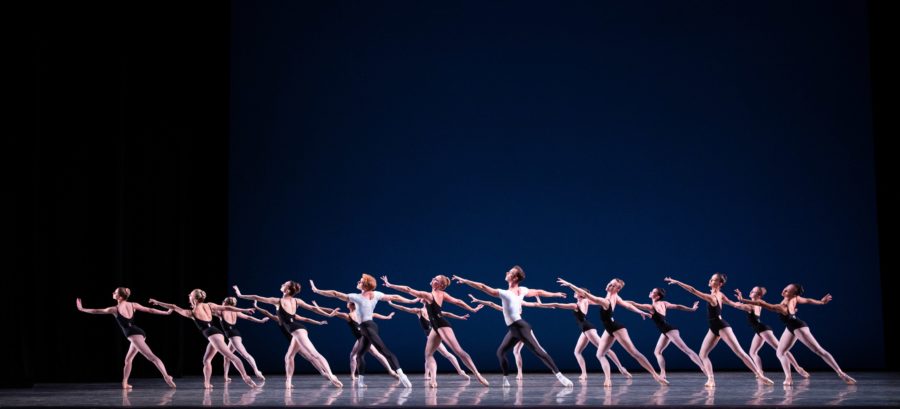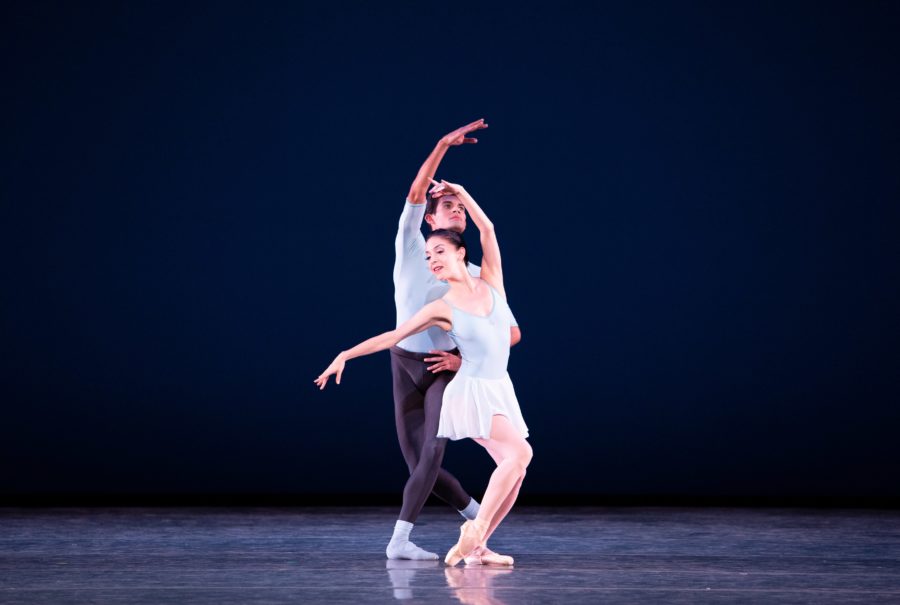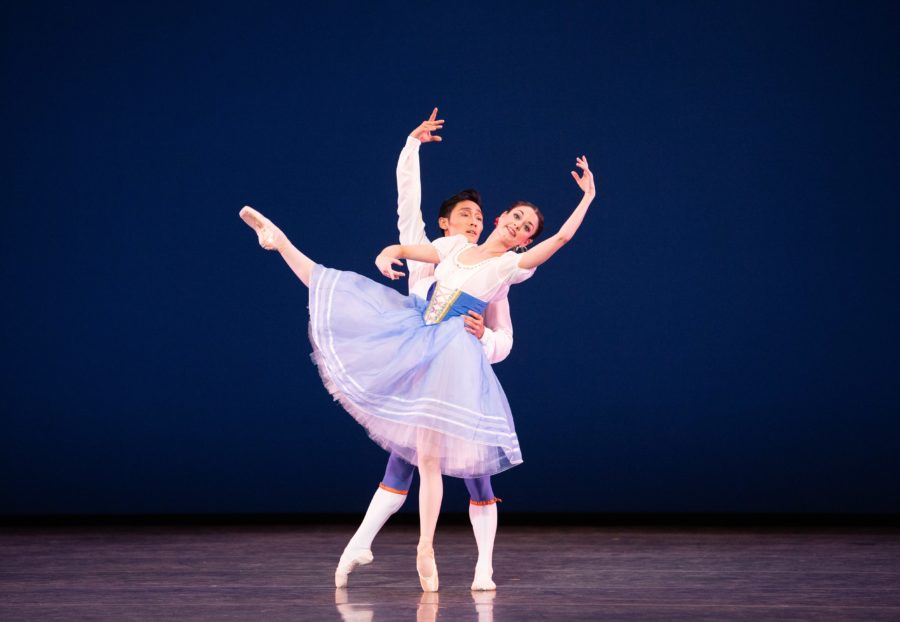Miami City Ballet presents a program which includes a cornucopia of flavours: George Balanchine’s neoclassical style with The Four Temperaments; his homage to his longtime colleague Igor Stravinsky, in Duo Concertant; a taste of August Bournovnville’s style and technique with The Flower Festival in Genzano Pas De Deux and Justin Peck’s Heatscape, a celebration of the exuberance of youth and the Miami mural filled neighborhood of Wynwood. The program was presented on Saturday, February 23 at the beautiful Adrienne Arsht Center in Miami.
The Four Temperaments (1946) and Duo Concertant (1972) are but two of George Balanchine’s choreography that displays his multifaceted brilliance. It was a pleasure to see them both on the same program. The Four Temperaments, which was originally subtitled “ A Dance Ballet Without a Plot” is one of Balanchine’s first neoclassical ballet and takes its point of departure from the ancient Greek thought that each of us possess four temperaments in different degrees: Melancholic, Sanguinic, Phlegmatic and Choleric. The piece begins with a Theme dance by three couples which sets the mood for what follows. Melancholic is superbly danced by Alexander Peters. His variation had lots of jetes then a twisted fall to the floor, this segment is repeated several times, at one time he appears to be walking a tightrope with his arms balancing him before he falls to the floor again. His mood picks up when joined by two female dancers: Nicole Stalker and Julia Cinquemani, then four female dancers who appear as if ready to energize things with grande battements front with hip thrusts, moving across the stage in perfect unison and intensity.

Sanguine, a duet performed by Nathalia Arja and Chase Swatosh is a dance in waltz tempo and is light and effusive, Arja and Swatosh walk on stage, join hands and execute a lively dance that is filled with lots of partnering, a series of lifts around the stage, and attitude turns. Each dancer captured the essence of the piece. They exit the stage with Arja performing a beautiful glissade grande jete.
Phlegmatic starts with Rainer Krenstetter alone on the stage, He walks forward and languishingly stretches out one arm, which then leads to a ripple throughout his body. As if his energy is draining out of him. He does a series of slow walks, his body bent over, arms crossing. He is sluggish and the four woman who join him do not help dispel his apathetic manner. The final temperament, Choleric, appears aggressively with passes and arabesque. At one point she is partnered but leaps out of his grasp. Lauren Fadeley captures the temperament perfectly. The Greeks may or may not have been right about the four humours; Balanchine certainly was.

Balanchine famously said, “ See the music, hear the dance.” He may have been thinking of Duo Concertant, As the piece begins, the violinist, Mei Mei Luo and pianist Francisco Renno are on stage playing while the dancers stand listening, Their expressions is one of seeing the music. When Katia Carranza and Renan Cerdeiro walk center stage to dance, it’s as if the music had propelled them to dance, as if the notes were racing through their bodies. Duo Concertant was choreographed by Balanchine in 1972 for the Stravinsky Festival in honour of Stravinsky who died in 1971. This gem of ballet is a testament to the genius of both men. The music plays, the dancers dance, pause to return to the piano to listen to the music, then dance again. Their dancing is filled with spontaneity and naturalness; at one point Carranza mimics playing the violin. This sequence continues until the end when the stage goes dark and Carranza and Cerdeiro are in the spotlight. It is in these last minutes that Balanchine is at his most sentimental. In the spotlight we see arms touching, separate and find each other again until there is just one hand reaching high to the light.
The Flower Festival in Genzano Pas De Deux was danced exquisitely by Jennifer Lauren and Shimon Ito. The ballet is a fine example of choreographer August Bournonville style and technique. The steps are quick and small, the arms are held lower and the partnering is not as intimate as we are used to seeing today. There is a briskness to the steps — with lots of petite allegro footwork. Lauren starts out with cabrioles while Ito does attitude jete jumps followed by beats. Lauren does the challenging arabesque-seconde- arabesque sequence with aplomb. Both were flawless in this 19th century charming ballet.

Walking into the Miami neighbourhood of Wynwood is to step into a vibrant and youthful area surrounded by colourful murals on walls. One notable section is designed by the muralist Shepard Fairey. Justin Peck was inspired by Fairey’s work to create Heatscape, his captivating and exuberant piece. Every visitor to Miami should see this piece as it captures the flavor of the neighbourhood. Peck set his piece to Bohuslav Martinu beautiful Concerto No. 1 for Piano and Orchestra. As the curtain opens the dancers are standing against Fairey’s backdrop of various colours, orange being the most dominant, with a dove in the centre. The dancers are in a line and as the music begins they rush forward towards the audience. What follows is dancing filled with inventive movement and patterns to the music. At one point a group of dancers are on one knee, one hand on the floor and the other behind their back as if waiting to start a race-perhaps to the shore or back into the action which is non-stop. The flavours of Balanchine, Bournonville and Peck permeate throughout the program as a beacon of excellence.
Reviewed on 23rd of February at the Adrienne Arsht Center


